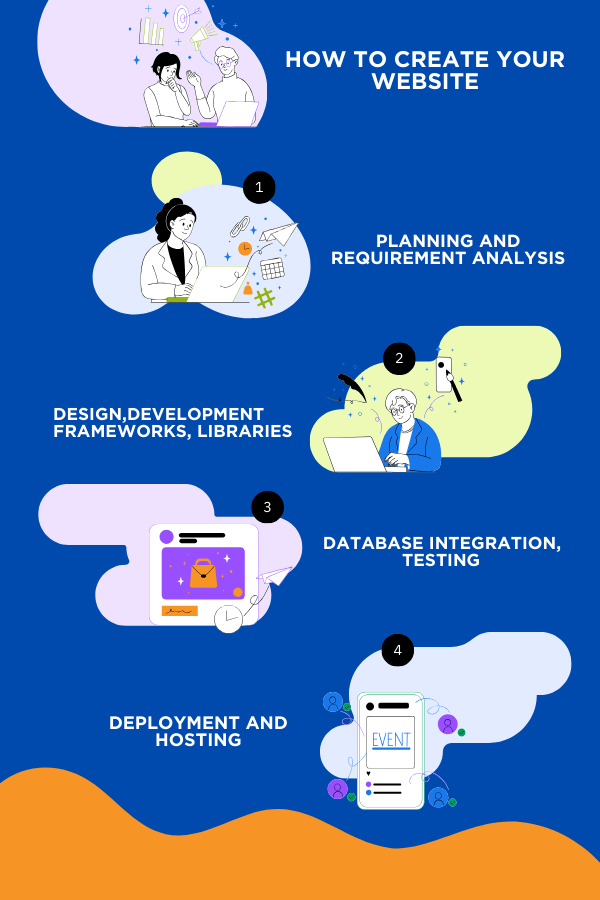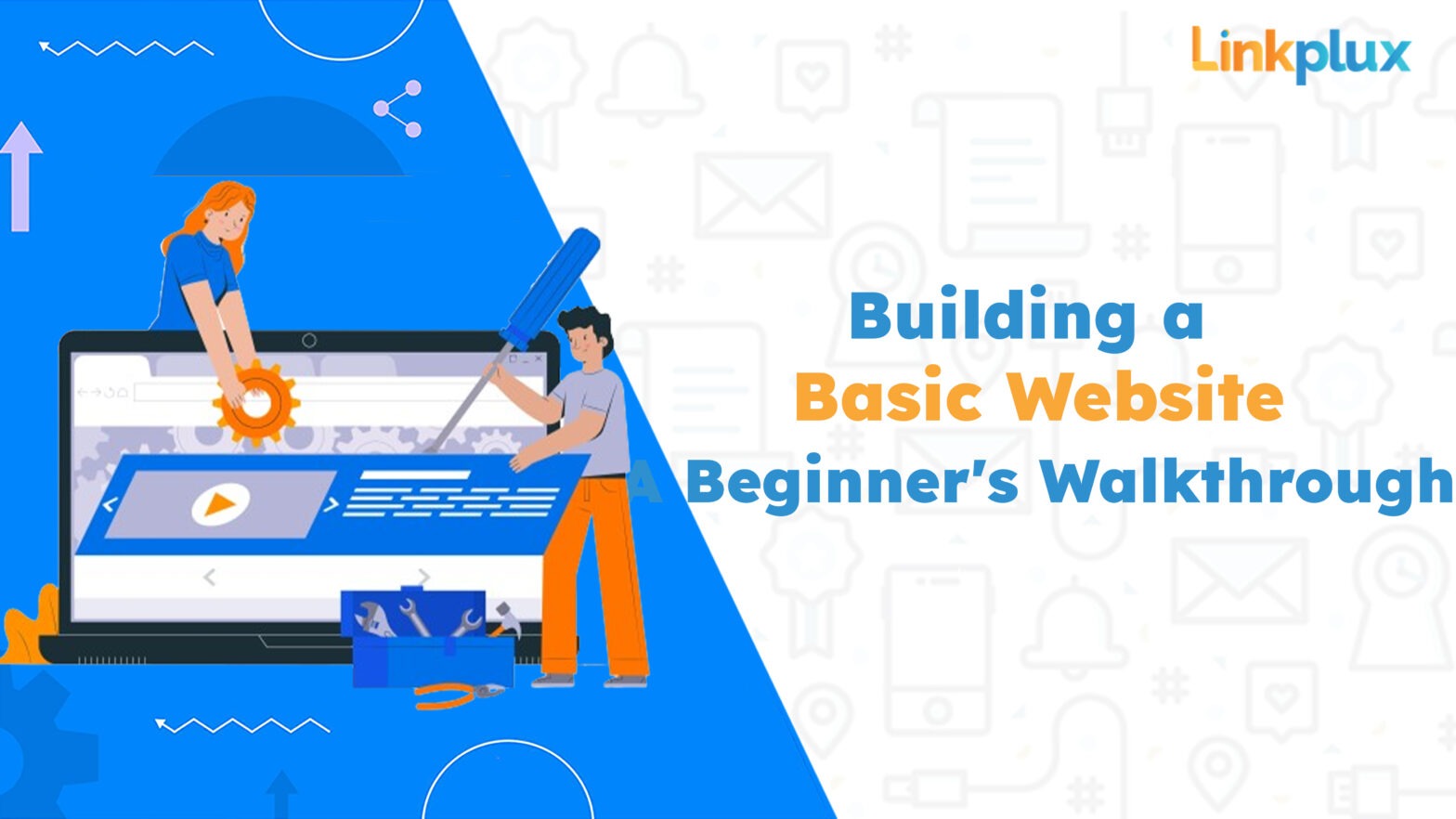Online development is building websites and online applications for public or private networks. Combining design, coding, and problem-solving skills is necessary to create dynamic and visually appealing online environments.
Essential Tools for Beginners :
Key Components of Web Development :
Planning and Requirement Analysis :
The Need and the Planning Determining project goals, comprehending target users, and summarizing essential characteristics are all part of the analysis in web development. Developers who work with stakeholders determine technical requirements, functionality, and project scope. The foundation for an efficient development process is laid by this comprehensive strategy, which also guarantees timely resource allocation.
Design :
Web development design integrates functionality and aesthetics to create visually appealing and user-friendly interfaces. It entails creating responsive layouts that easily adjust to different kinds of devices. A visually unified design strengthens brand identification, and user experience (UX) promotes intuitive navigation. In web development, design includes frontend components and backend architecture to create effective and engaging digital experiences. Designers and developers work together iteratively to bring concepts to life, promoting a seamless fusion of design and functionality.
Development :
Coding and design combine to produce websites and applications in the dynamic web development industry. It entails learning languages like JavaScript, HTML, and CSS, selecting the appropriate tech stack, ensuring flawless user experiences, and putting projects live online. With each coding project, novices overcome obstacles like compatibility, security, and hosting to become skilled programmers. A dedication to lifelong learning and community interaction is necessary for success in the dynamic profession of website building.
Frameworks :
In web development, frameworks are effective instruments that improve productivity by streamlining the coding process. They give developers an organized environment and pre-built modules so they may concentrate on creating features instead of beginning from scratch. Leading frontend frameworks such as Vue.js, Angular, and React make it easier to create dynamic user interfaces. Server-side development is accelerated on the backend by frameworks like Django (Python), Express (Node.js), and Ruby on Rails (Ruby). These frameworks support web projects’ scalability and maintainability by adhering to best practices and increasing productivity. The needs of the project, developer preferences, and required functionality all play a role in selecting the best framework. Using frameworks enables programmers to produce scalable, feature-rich, and reliable online applications effectively.
Libraries :
Libraries are invaluable resources for web developers since they are pre-written codebases that simplify and improve various activities. Popular libraries for frontend development, such as jQuery, simplify DOM manipulation and event handling, and Bootstrap offers a visually appealing and responsive design framework. React and Vue.js are robust technologies that provide effective state management for creating dynamic user interfaces. On the backend, Django enables quick web development in Python and Express.js streamlines server-side programming in Node.js. By incorporating these libraries into projects, developers may work more quickly, promote best practices, and create web apps with more features and stability.
Database Integration :
A key component of web development is database integration, which creates a seamless connection between the front end and back end for data storage and retrieval. It acts as the digital framework that allows websites and applications to have dynamic and interactive features. Well-known databases like PostgreSQL, MongoDB, and MySQL are essential for organizing and managing information, including user and content data. To facilitate adequate data storage, retrieval, and manipulation, integration of a database entails creating a link between the web application and the database server. By following this procedure, you can be confident that your web development projects will improve user experience by displaying static material and reacting dynamically to user inputs and interactions. While creating dynamic and data-driven solutions in the constantly changing field of website development, website developers must have a solid understanding of database integration principles.
Monitoring and Maintenance :
Monitoring in web development is maintaining a close eye on website performance, availability, problems, and security. Maintenance comprises frequent updates, database optimization, content renewal, backups, scalability planning, resource optimization, and user feedback/testing to guarantee optimal operation and user experience optimization.
Testing :
Testing is a crucial stage of web development that ensures your application or website works as planned and offers users a smooth experience. Comprehensive testing covers various topics, including performance, usability, and functionality. While usability testing evaluates the user interface and overall user experience, functional testing verifies that all features operate as intended. Performance testing assesses your website’s responsiveness and speed in various scenarios. Tools for automated testing can help developers find and fix problems more quickly by streamlining the testing process. Thorough testing is essential to the web development lifecycle because it improves the project’s quality and improves the user experience.
Deployment :
In web development, deployment is the critical phase where your application or website goes live and becomes user-accessible. Giving your audience a flawless experience entails moving your project from a development environment to a production server. For novices, manual deployment using FTP or cPanel offers a simple solution; for more control and efficiency, version control technologies such as Git give an alternative. Modern methods that automate the deployment process, such as Continuous Integration/Continuous Deployment (CI/CD), simplify updates.
Web-based hosting:
Web hosting and deployment are necessities for putting a website live online. To store website files and provide global user access, web hosting entails renting server space. Various hosting options, such as cloud or shared hosting, meet a range of needs. A domain name simplifies user access by giving them a unique online address.
Development Types :
Frontend Development:
The process of creating a website’s or online application’s user interface and experience is known as frontend development. Front-end developers employ HTML, CSS, and JavaScript to develop and implement the visual components and interactive features that users engage with directly in web browsers. This comprises the layout, navigation, forms, and any other elements that users encounter and interact with on the website. Frontend development focuses on producing a visually appealing and user-friendly interface responsive to different devices and browsers.
Backend Development:
Backend development is the construction and administration of server-side logic, databases, and application architecture required to run a website or online application. It includes managing server-side operations, database administration, server setup, and guaranteeing the software’s general functioning, performance, and security. Backend developers use server-side languages, frameworks, and databases to handle frontend requests, manage data, and run business logic.
Full-Stack Development:
Full-stack development requires competence in both the frontend and backend of web applications. Full-stack engineers are adept in HTML, CSS, and JavaScript and may employ frontend frameworks like React or Angular. On the back end, they use server-side languages like Node.js, Python, or Java to communicate with databases like MySQL or MongoDB. This adaptability allows them to manage various project tasks, from developing user interfaces to maintaining databases and server architecture. Full-stack engineers contribute significantly to the end-to-end development of web applications, influencing the user experience and the underlying logic and functionality.
Mobile app development:
It entails creating, writing, testing, and delivering apps specialized to specific operating systems (such as iOS or Android). Developers employ programming languages such as Swift or Kotlin and development frameworks to construct apps that can be published via app stores. The process also includes designing the user interface (UI) and user experience (UX) and considering performance, security, and device compatibility. Mobile app development seeks to deliver relevant and engaging experiences for users of portable devices.
Web Design:
Web design is building a website’s visual and interactive features to improve user experience and achieve specific objectives. It includes layout, color schemes, typography, images, overall aesthetic, and usability and accessibility concerns. Effective web design seeks to produce a visually appealing, intuitive, and functional interface that engages people and allows for easy navigation across the information. It also includes responsiveness to guarantee that the design works appropriately with different devices and screen sizes.
E-Commerce Development :
E-commerce development is the establishment and management of online platforms for buying and selling products and services. This includes planning, developing, and implementing features for safe transactions, product management, user authentication, and a smooth shopping experience. E-commerce websites often include payment gateways and inventory management, as well as aspects such as user reviews, recommendation engines, and personalized shopping experiences.
CMS Development :
CMS, or information Management System, creation is designing software that allows users to manage and organize digital information on a website efficiently. A CMS often provides an easy interface for users to create, modify, publish, and organize material without the need for technical knowledge. It has capabilities like user management and version control, and it frequently accepts plugins or extensions for added functionality. CMS development aims to expedite content production and administration, enabling users to easily maintain a dynamic and up-to-date website. WordPress, Joomla, and Drupal are some popular CMS examples.
Web Security :
Web security involves safeguards for websites and web applications. This comprises encryption, authentication, input validation, firewalls, auditing, patching, and user education. The purpose is to prevent unauthorized access, data breaches, and other cyber risks, hence maintaining a safe online environment.

Common Challenges for Beginners :
Conclusion :
Starting off in web development is an exciting adventure. You’ve established a strong foundation by learning the essential tools and languages and handling the challenges of hosting, deployment, and design. Obstacles are chances for improvement, whether they relate to platform compatibility, security, or tech selection. Remember that the web development community is here to support you while you complete this first phase. Continue being inquisitive, keep coding, and accept the ongoing education that characterizes this ever-evolving area.
FAQs for Website development:
What does the term Website development mean?
The process of conceiving, planning, and constructing websites for the internet is known as website development. Building useful and aesthetically pleasing websites that satisfy the demands of organizations or individuals requires a variety of skills, including coding, programming, graphic design, and content generation.
Which are the main processes in developing a website?
What kinds of websites are there?
Which aspects need to be taken into account while selecting a platform for website development?
When selecting a platform for website creation, it’s crucial to take into account elements like:
What is the price of developing a website?
Numerous variables, like the project’s complexity, the website’s size, the degree of customization needed, and the developers’ level of experience, might affect how much website development costs. More complicated and feature-rich websites can come with higher costs than smaller, more straightforward websites. To acquire an exact cost estimate, it’s crucial to talk over project needs and budget with a website development team.

